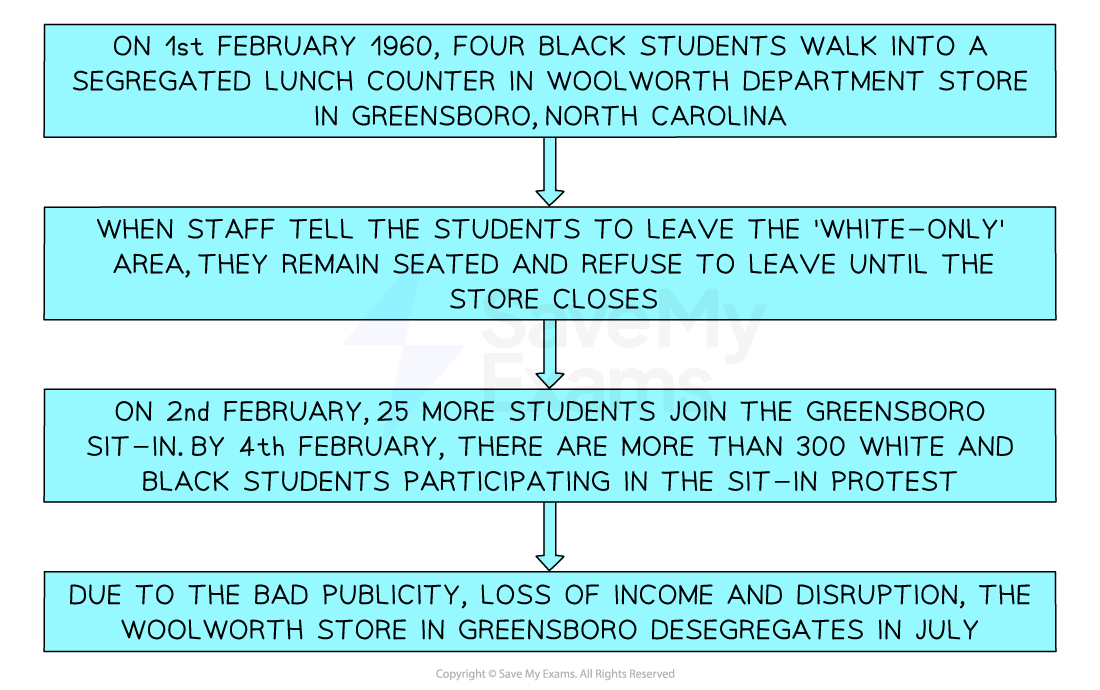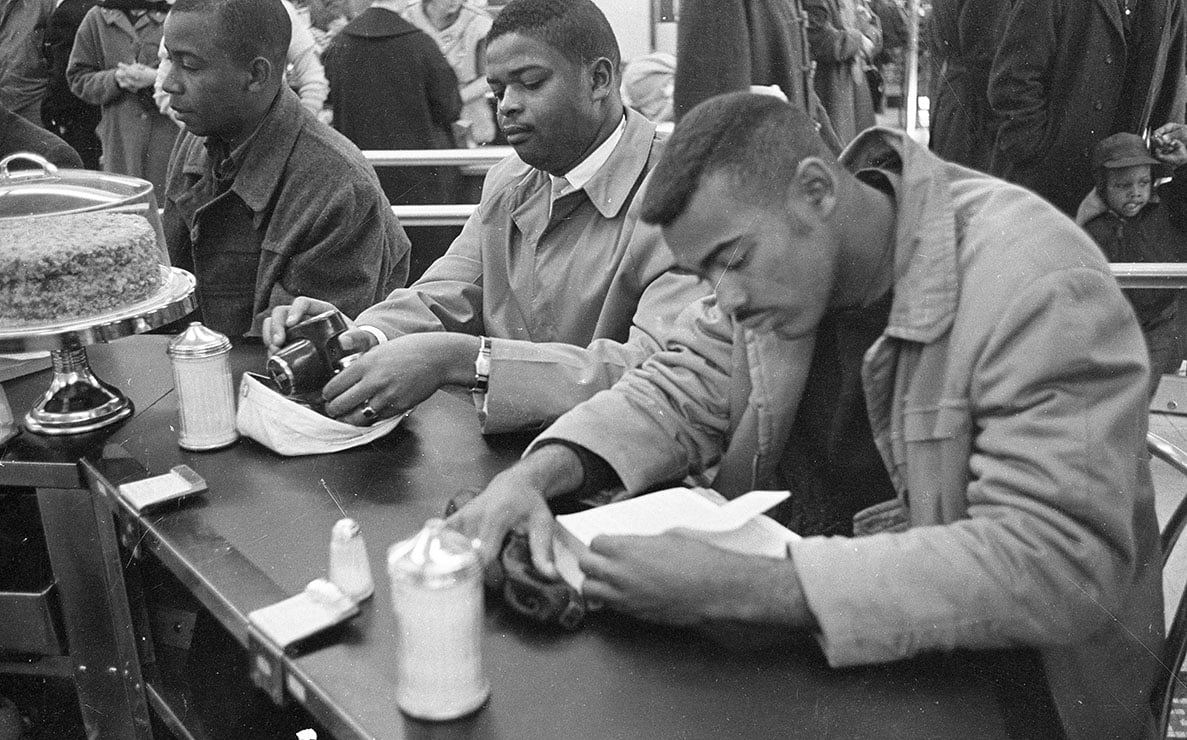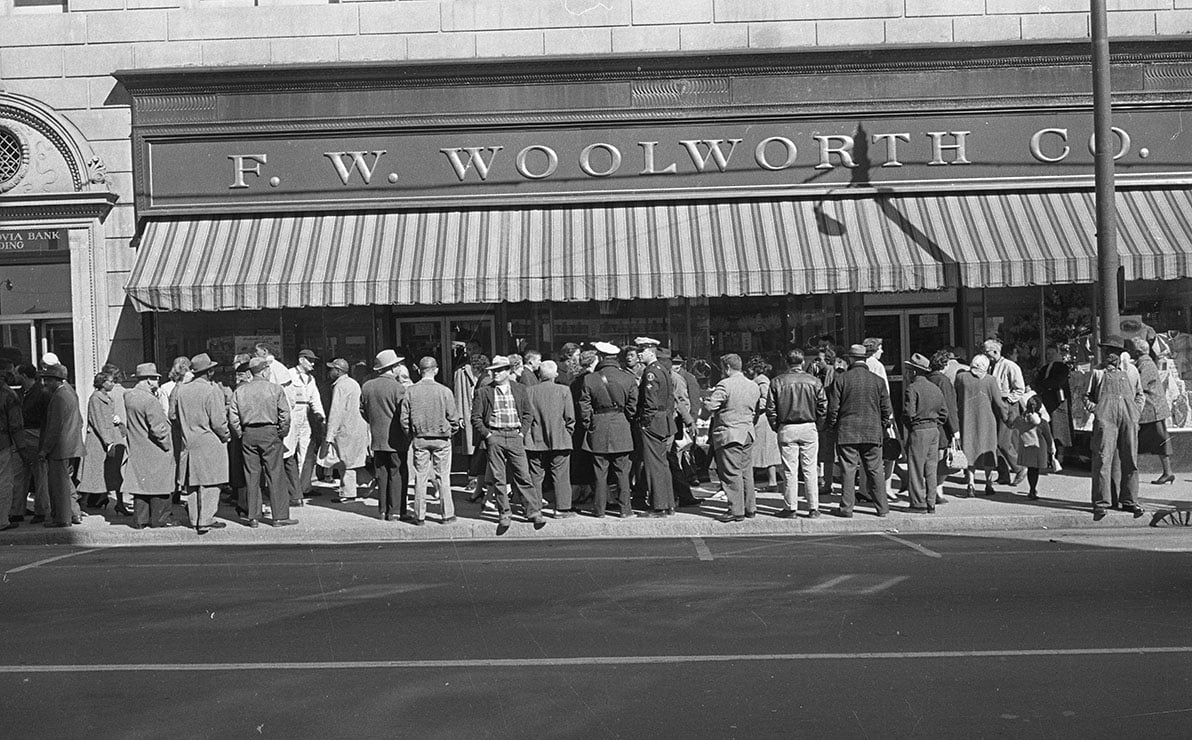The Greensboro Sit-In, 1960 (Edexcel GCSE History): Revision Note
Exam code: 1HI0
Summary
The Greensboro Sit-In began as an isolated protest by four Black students against the segregation policy of a local department store. It rapidly developed into a sit-in movement that reached 55 cities across the South. The peaceful protesters were met with violence and intimidation. However, the sit-ins attracted enormous publicity for the Civil Rights movement and not only ended segregation at lunch counters but led to the creation of the Student Nonviolent Coordinating Committee (SNCC) and inspired a new wave of direct-action protests.
What was the Greensboro sit-in?

The Greensboro sit-in began on 1 February 1960 when four Black students sat at a Whites-only lunch counter in a department store in Greensboro, North Carolina and refused to move
They stayed until closing time and hoped their direct-action protest would lead to publicity that would shame the Woolworths department store into change
The following day, 27 more students joined them
By the end of the week, there were over 300 both Black and White protesters taking part
Angry customers or police regularly removed protestors from the counters, but another protestor instantly replaced them
Sugar, coffee, and ketchup were poured on the protestors
By week two of the protest, over a thousand protesters attended the store but so did many counter-protesters.
The protestors also organised boycotts of any other segregated stores in Greensboro
Soon, students in other North Carolina towns started to copy the protests at segregated lunch counters
Before long, sit-in protests had spread to 55 cities all over the South


Organising the Greensboro sit-in: The SNCC and CORE
With the number of sit-ins growing all the time, the students formed a more formal organisation to help coordinate them
The Student Non-violent Co-ordinating Committee (SNCC) was created on 15 April 1960 at Shaw University in North Carolina with a grant of $800 from Martin Luther King’s Southern Christian Leadership Conference (SCLC)
The SNCC was also aided by volunteers from the Congress of Racial Equality (CORE) and were trained in strategies to cope with violent confrontations
The significance of the Greensboro sit-in
Short-term Significance
As a direct result of the sit-ins, in July 1960, Woolworths announced it would end segregation in its Greensboro store
Woolworths lost the equivalent of millions of dollars due to the protests
However, Woolworths stores continued to be segregated in other Southern States until 1965
Although all of the initial four protesters were Black students, the sit-in movement quickly attracted White supporters and people who weren’t students
Around 50,000 people joined the protests by the summer of 1960, demonstrating the enormous support that existed for desegregation
Longer-term significance
The sit-in movement attracted enormous positive publicity for the Civil Rights cause
The protesters were seen to be peaceful and dignified
Those in favour of segregation appeared brutal and vicious
Like the Montgomery Bus Boycott, it damaged America’s reputation abroad
The Greensboro sit-in established the SNCC which went on to play an important role in the Civil Rights Movement of the early 1960s
The SNCC helped encourage voter registration and played a role in ending segregation in hotels
The success of the sit-in movement helped inspire the Freedom Riders and contributed to the momentum that led to the March on Washington
Examiner Tips and Tricks
Get into the habit of always using the correct historical terminology as well as spelling and punctuating correctly when writing revision notes. The four marks available for SPaG on the ‘How far do you agree’ question in this paper could have a significant impact on your final grade.

Unlock more, it's free!
Did this page help you?